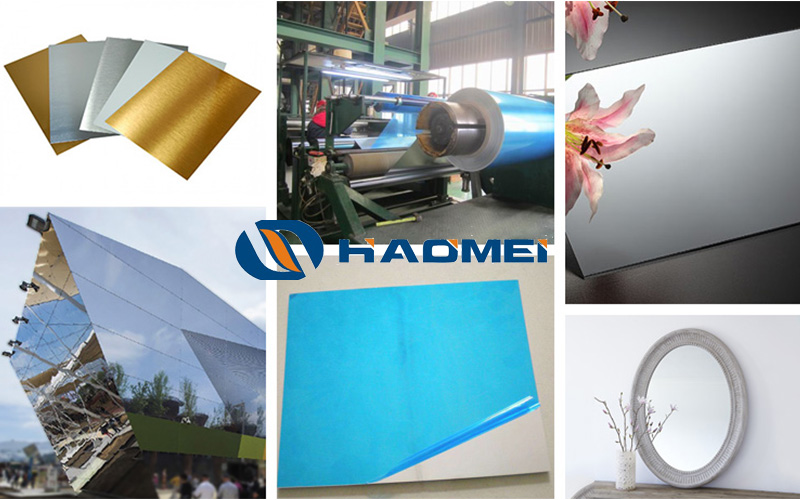Anodizing of Mirror Finish Anodized Aluminum Sheet
January 10, 2019
Anodizing is an important step for improvement of aluminum sheet’s corrosion resistance and colors. The production of mirror finish anodized aluminum sheet can not avoid such a process, either. An anodized aluminum sheet is applied in products of high requirements about surface and service life. Take the aluminum mirror sheet for example. It’s usually processed into furniture panels, ceilings, curtain walls, tool boxes and jewellery case, all of which are expected to be shiny and new even after a long term of application. Then what’s the anodizing overflow of mirror finish anodized aluminum sheet?

Generally speaking, there are three steps.
Degrease. The surface of a polished mirror aluminum sheet is wiped using a damp cotton wool with solvent. After the oil is removed, the worker will further wipe it with a clean cotton cloth for several times. Common solvents include trichloroethylene, ethyl acetate, acetone, methyl ethyl ketone and gasoline.
Anodizing method one. After being degreased, the sheet goes through a chemical treatment in a solution of the following compositions: ammonium hydrogen fluoride 3-3.5, chromium oxide 20-26, sodium phosphate 2-2.5, concentrated sulfuric acid 50-60, boric acid 0.4-0.6 and water 1000. After being impregnated in the solution at 25-40 ° C for around 6 minutes, the mirror finish aluminum sheet is further washed and then dried. Sheets treated by this method has high bonding strength and can be glued within 4 hours after treatment. It is suitable for epoxy glue and epoxy-butyronitrile glue.
Anodizing method two. After being degreased, the sheet goes through an anodizing process in a solution of concentrated sulfuric acid of 22g /l for 10 to 15 minutes under the direct current intensity of 1-1.5A / dm2, and then in saturated potassium dichromate solution for 5 to 20 minutes at a temperature between 95 and 100 °. last, the sheet gets washed and dried. This method of anodizing leaves the surface of the mirror finish anodized aluminum sheet highly active and more susceptible to dust or moisture, so the treated sheet surface should be glued as quickly as possible.


 Nydia
Nydia
 Sales Manager
Sales Manager